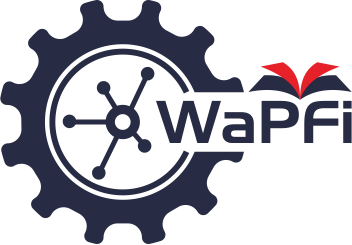Exploring trends in augmented reality research for science education: A bibliometric mapping analysis
Abstract
Augmented reality (AR) has emerged as a captivating research area in science education. This study seeks to analyze bibliometric trends in the past nineteen years by mapping content and articles related to AR's use in science education. The research employs descriptive quantitative bibliometric mapping, accessing 354 sources from 594 documents, with 35 documents selected to examine literature on AR in science education. Through bibliometrics, we evaluate the most prominent sources, authors, cited documents globally, frequently used words, and literature development trends on this topic. Recent literature on using AR in science education has garnered significant attention. Research trends demonstrate a steady rise in publications discussing AR's use to 1) enhance scientific learning, 2) increase student engagement and present concepts more concretely, 3) motivate learning and critical thinking, 4) facilitate collaborative learning, and 5) offer simulation opportunities to students.
Downloads
References
Abdurrahman, M., Halim, A. & Sharifah, O. (2021). Improving polytechnic students’ high-order-thinking-skills through inquiry-based learning in mathematics classroom. International Journal of Evaluation and Research in Education, 10(3), 976-983. https://doi.org/10.11591/IJERE.V10I3.21771
Ainiyah, Q., Yuliati, L. & Parno, P. (2020). Analisis Penguasaan Konsep dan Kesulitan Belajar Materi Alat-Alat Optik pada Siswa Kelas XI MAN Tuban. Jurnal Riset Pendidikan Fisika, 5(1), 24–29. http://journal2.um.ac.id/index.php/jrpf/
Akcaoglu, M., Gutierrez, P., Hodges, B. & Sonnleitner, P. (2017). Game design as a complex problem solving process Handbook of research on serious games for educational applications (pp. 217-233): IGI Global.
Akçayır, M. & Akçayır, G. (2017) Advantages and challenges associated with augmented reality for education: A systematic review of the literature. Educ. Res. Rev. 2017, 20, 1–11.
Alfiah, S. & Dwikoranto, D. (2022). Penerapan model problem based learning berbantuan laboratorium virtual PhET untuk meningkatkan HOTs siswa SMA. Jurnal Penelitian Pembelajaran Fisika, 13(1), 9–18. https://doi.org/10.26877/jp2f.v13i1.11494
Asuri, R., Suherman, A. & Darman, D. (2021). Penerapan model problem based learning (PBL) berbantu mind mapping dalam pembelajaran fisika untuk meningkatkan kemampuan pemecahan masalah pada materi usaha dan energi. Jurnal Penelitian Pembelajaran Fisika, 12(1), 22–28. https://doi.org/10.26877/jp2f.v12i1.7624
Balaton, M., Cavadas, J., Carvalho, P. S. & Lima, J. J. G. (2021). Programming Ozobots for teaching astronomy. Physics Education, 56(4), 045018. https://doi.org/10.1088/1361-6552/abfb44
Bygstad, B., Ovrelid, E., Ludvigsen, S. & Dæhlen, M. (2022). From dual digitalization to digital learning space: Exploring the digital transformation of higher education. Comput. Educ. 2022, 182, 104463.
Cai, S., Chiang, F., Sun, Y., Lin, C. & Lee, J. (2016) Applications of augmented reality-based natural interactive learning in magnetic field instruction. Interact. Learn. Environ. 2016, 25, 778–791.
Choi, S. & Park, J. (2021) Development of Augmented Reality System for Productivity Enhancement in Offshore Plant Construction. J. Mar. Sci. Eng. 2021, 9, 209.
Fidan, M. & Tuncel, M. (2019) Integrating augmented reality into problem based learning: The effects on learning achievement and attitude in physics education. Comput. Educ. 2019, 142, 103635.
Granic. A. & Ukušic´, M. (2011) Usability Testing and Expert Inspections Complemented by Educational Evaluation: A Case Study of an e-Learning Platform. J. Educ. Technol. Soc. 2011, 14, 107–123.
Grinshkun, A.V., Perevozchikova, M.S., Razova, E.V. & Khlobystova, I.Y. (2021). Using Methods and Means of the Augmented Reality Technology when Training Future Teachers of the Digital School. European Journal of Contemporary Education, 10(2), 358-374. https://doi.org/10.13187/ejced.2021.2.358
Haleem, A., Javaid, M., Qadri, M.A. & Suman, R. (2022) Understanding the role of digital technologies in education: A review. Sustain. Oper. Comput. 2022, 3, 275–285.
Hosseini, H., Hartt, M. & Mostafapour, M. (2019) Learning IS child’s play. ACM Trans. Comput. Educ. 2019, 19, 1–18.
Huang, Y., Li, H. & Fong, R. Using Augmented Reality in early art education: A case study in Hong Kong kindergarten. Early Child Dev. Care 2016, 186, 879–894.
Johnson, L., Smith, R., Willis, H., Levine, A. & Haywood, K. (2011) The 2011 Horizon Report; The New Media Consortium: Austin, TX, USA.
Kurniawan, W., Darmaji, D., Astalini, A., Kurniawan, A., Hidayat, M. & Kurniawan, N. (2019). Multimedia physics practicum reflective material based on problem solving for science process skills. International Journal of Evaluation and Research in Education, 8(4), 590-595. https://doi.org/10.11591/ijere.v8i4.20258
Lampropoulos, G. (2023) Augmented Reality and Artificial Intelligence in Education: Toward Immersive Intelligent Tutoring Systems. In Augmented Reality and Artificial Intelligence: The Fusion of Advanced Technologies; Springer Nature: Cham, Switzerland, pp. 137–146.
Pidel, C. & Ackermann, P. (2020). Collaboration in virtual and augmented reality: a systematic overview. Paper presented at the International Conference on Augmented Reality, Virtual Reality and Computer Graphics.
Ramadhan, A. T. & Hardianto, H. (2020). Perancangan aplikasi augmented reality pengenalan baret TNI berbasis android. IT (Informatic Technique) Journal, 8(2), 199-209. https://doi.org/10.22303/it.8.2.2020.199-209
Ramadhanti, D., Nuryani Suwarno, R., Kuswanto FMIPA, H. & Negeri Yogyakarta, U. (2021). Literature Review: Technology Development and Utilization of Augmented Reality (AR) in Science Learning. Indonesian Journal of Applied Science and Technology, 2(4), 135–144. https://rb.gy/bkplay
Royantoro, F., Mujasam, M., Yusuf, I. & Widyaningsih, W. (2018). Pengaruh model problem based learning terhadap higher order thinking skills peserta didik. Berkala Ilmiah Pendidikan Fisika, 6(3), 371-382. https://doi.org/10.20527/bipf.v6i3.5436
Schmidt, J. (2007) Preparing Students for Success in Blended Learning Environments: Future Oriented Motivation and Self-Regulation. Ph.D. Thesis, University of Southampton, Southampton, UK.
Sirakaya, M. & Cakmak, E.K. (2018). The effect of augmented reality use on achievement, misconception and course engagement. Contemporary Educational Technology, 9(3), 297-314. https://doi.org/10.30935/cet.444119
Suhirman, S., Prayogi, S. & Asy’ari, M. (2021). Problem-Based Learning with Character-Emphasis and Naturalist Intelligence: Examining Students Critical Thinking and Curiosity. International Journal of Instruction, 14(2), 217-232. https://doi.org/10.29333/iji.2021.14213a
Sulistyani, N. (2018). Implementation of problem-based learning model (Pbl) based on reflective pedagogy approach on advanced statistics learning. IJIET (International Journal of Indonesian Education and Teaching), 2(1), 11–19. https://doi.org/10.24071/ijiet.v2i1.952
Suprapto, N., Ibisono, H.S. & Mubarok, H. (2021). the Use of Physics Pocketbook Based on Augmented Reality on Planetary Motion To Improve Students’ Learning Achievement. Journal of Technology and Science Education, 11(2), 526-540. https://doi.org/10.3926/jotse.1167
Susilowati, E, & Samsudin, A. (2021). What do physics teachers need? A need analysis of interactive multimedia to train creative thinking in static fluid. In Journal of Physics: Conference Series (Vol. 2098, No. 1, p. 012029). IOP Publishing. https://doi.org/10.1088/1742-6596/2098/1/012029
Tati´c, D. & Teši´c, B. (2017) The application of augmented reality technologies for the improvement of occupational safety in an industrial environment. Comput. Ind, 85, 1–10.
Tatic, D. An augmented reality system for improving health and safety in the electro-energetics industry. Facta Univ.-Ser. Electron. Energetics 2018, 31, 585–598.
Theodoropoulos, A. & Lepouras, G. (2021) Augmented Reality and programming education: A systematic review. Int. J. Child-Comput. Interact, 30, 100335.
Villagran-Vizcarra, D., Luviano-Cruz, D., Pérez, A., Méndez, C. & Garcia, F. (2023) Applications Analyses, Challenges and Development of Augmented Reality in Education, Industry, Marketing, Medicine, and Entertainment. Appl. Sci, 13, 2766.
Wongsuwan, W., Huntula, J. & Liu, C. (2022). The interactive computer simulation and learning activity for facilitating students' conceptual understanding on the buoyant force through the CoSci learning platform. In 16th Siam Physics Congress, SPC 2021. https://doi.org/10.1088/1742-6596/2145/1/012075
Wu, H., Lee, Y., Chang, H. & Liang, C. (2013). Current status, opportunities and challenges of augmented reality in education. Computers & education, 62, 41-49.
Wu, Hwang, Yang, & Chen. (2018). Impacts of integrating the repertory grid into an augmented reality-based learning design on students’ learning achievements, cognitive load and degree of satisfaction. Interactive Learning Environments, 26(2), 221-234.
Wu, S., Hou, L., Zhang, G. & Chen, H. (2022) Real-time mixed reality-based visual warning for construction workforce safety. Autom. Constr, 139, 104252.
Zafeiropoulou, M., Volioti, C., Keramopoulos, E. & Sapounidis, T. (2021). Developing Physics Experiments Using Augmented Reality Game-Based Learning Approach: A Pilot Study in Primary School. Computers, 10, 126.
Zakirman, Z., Lufri, L., Khairani, K. & Rahayu, C. (2020). Implementation of The Play-Think-air-Share (PTPS) Learning Model for Elementary School Students to Master Part of Top Skill 2020. International Journal of Scientific & Technology Research (IJSTR), 9(03), 4643–4648. https://rb.gy/q8xjjc






